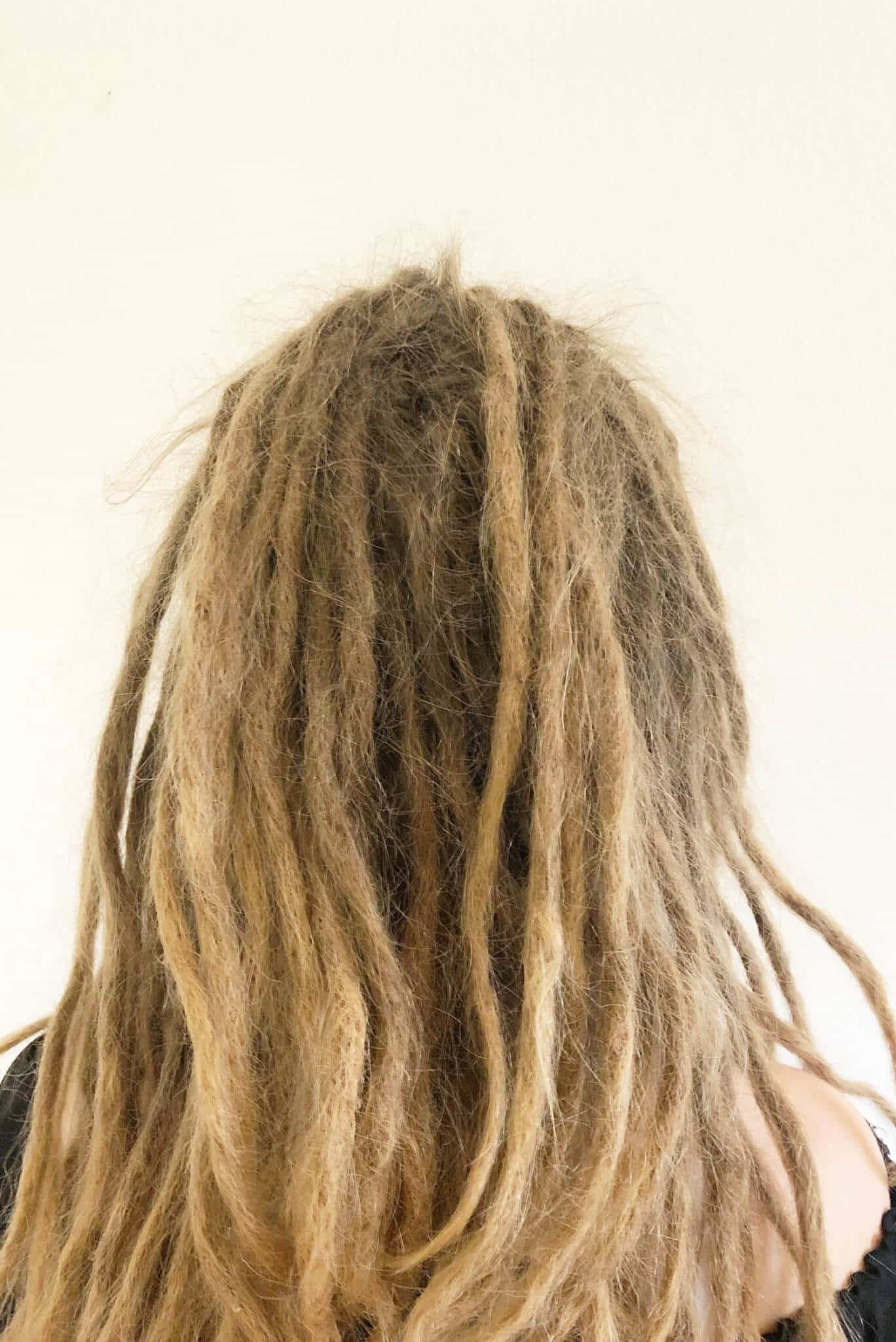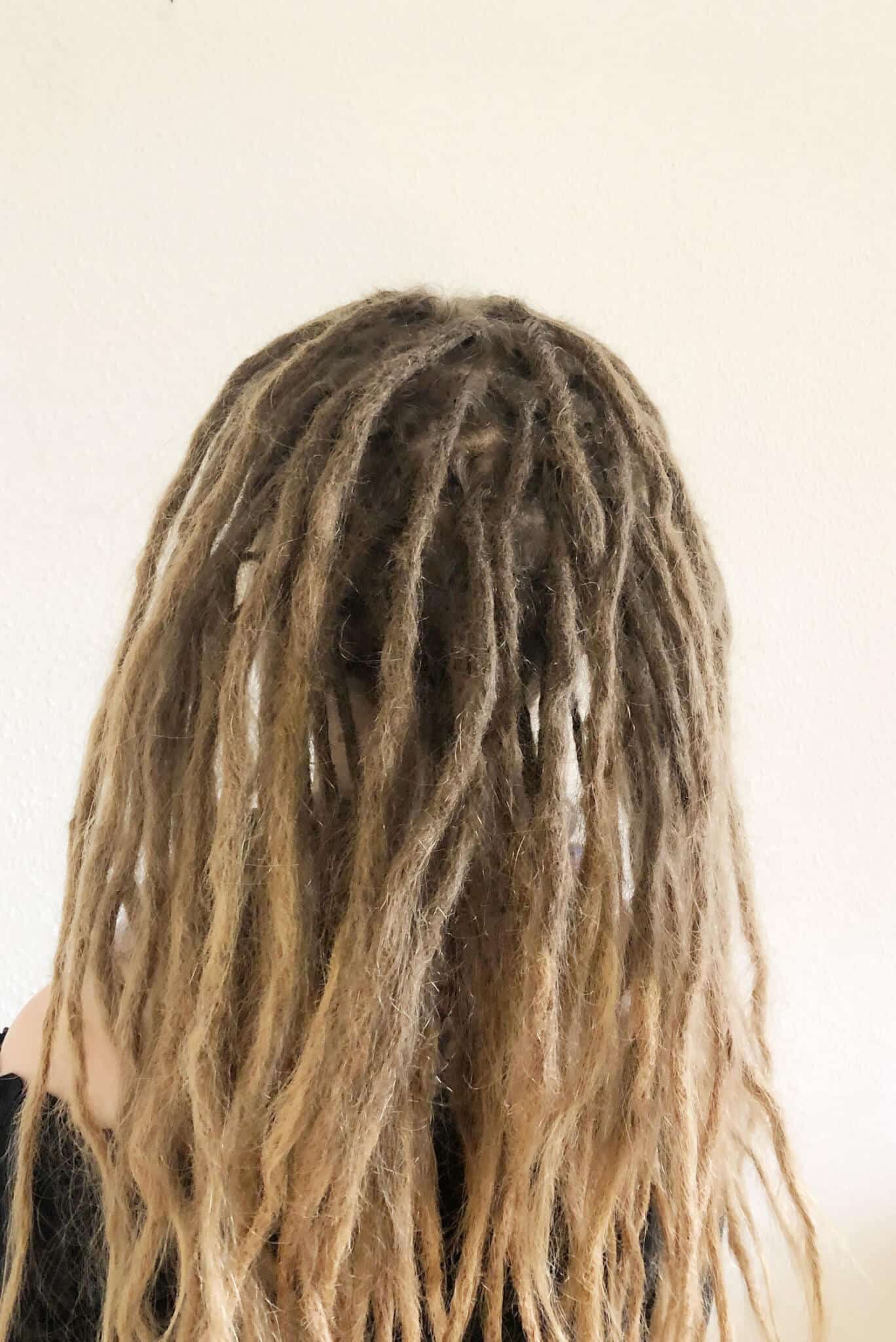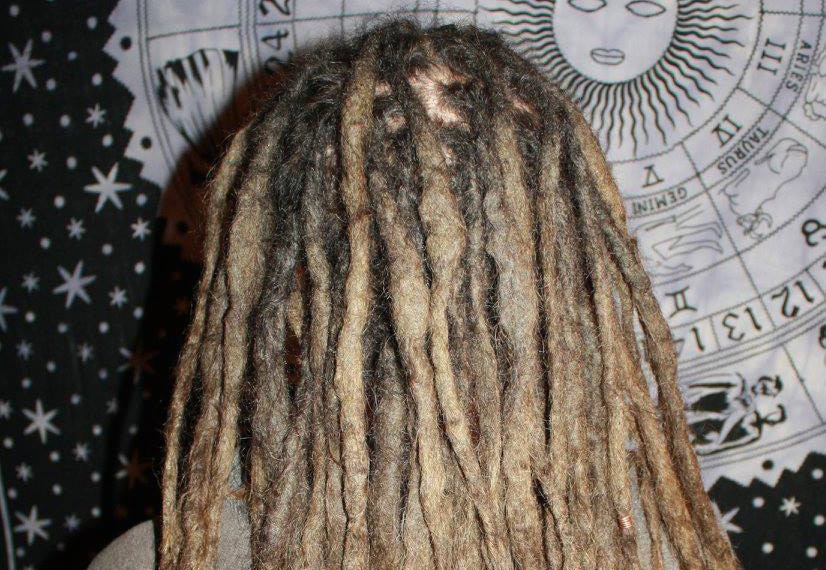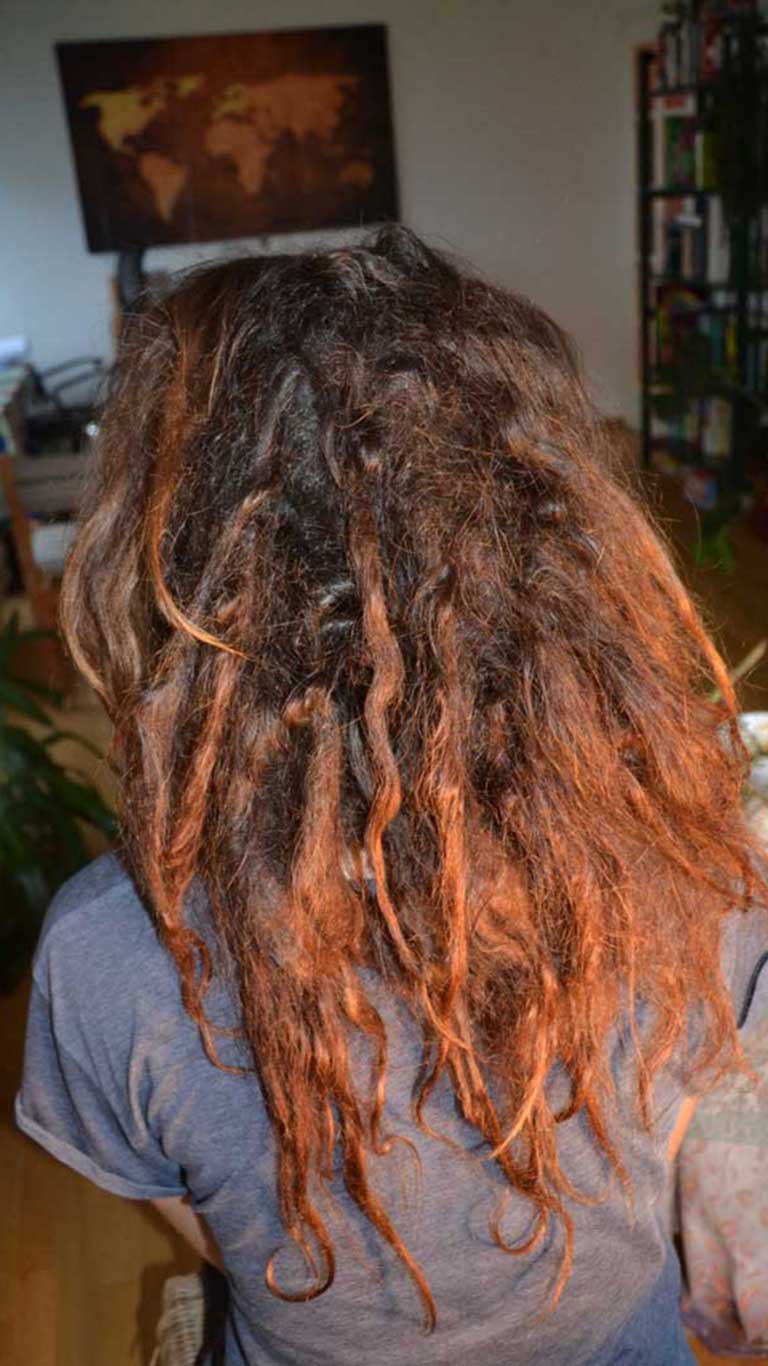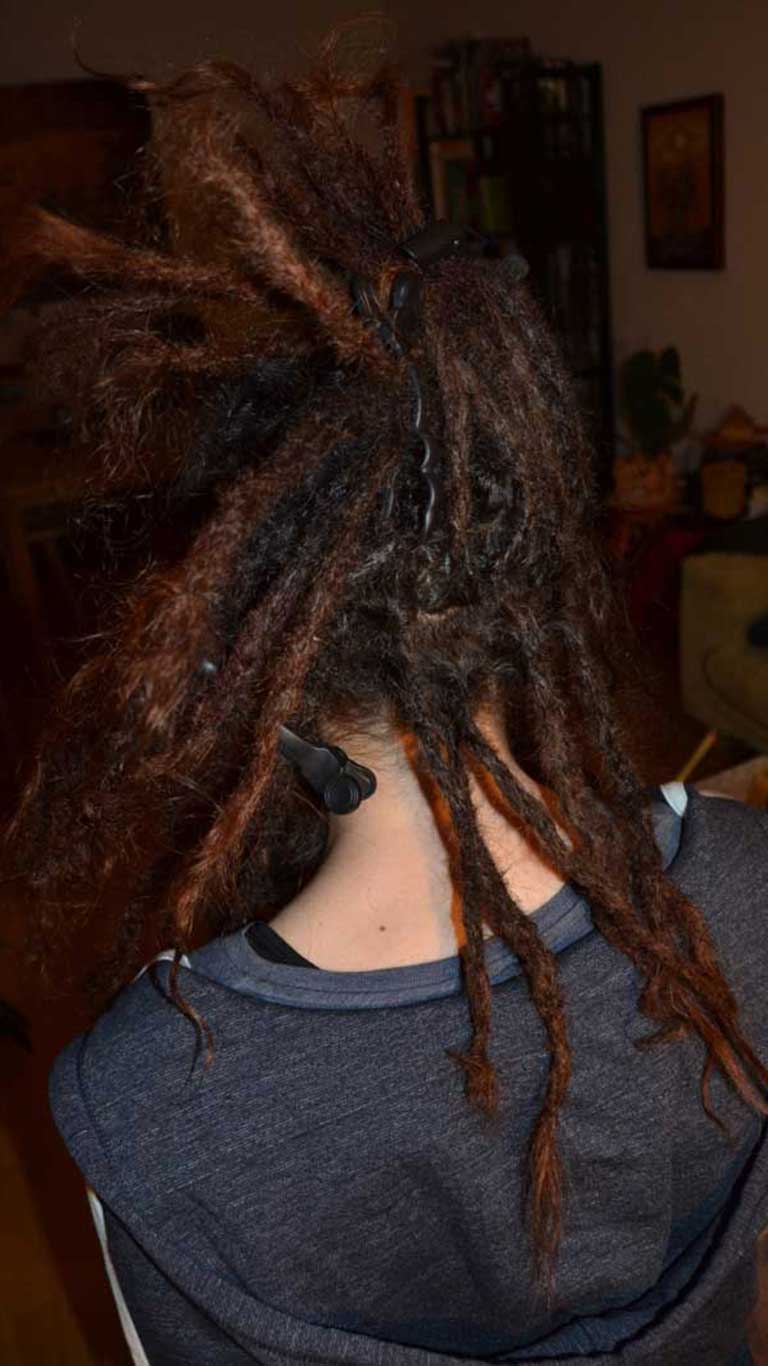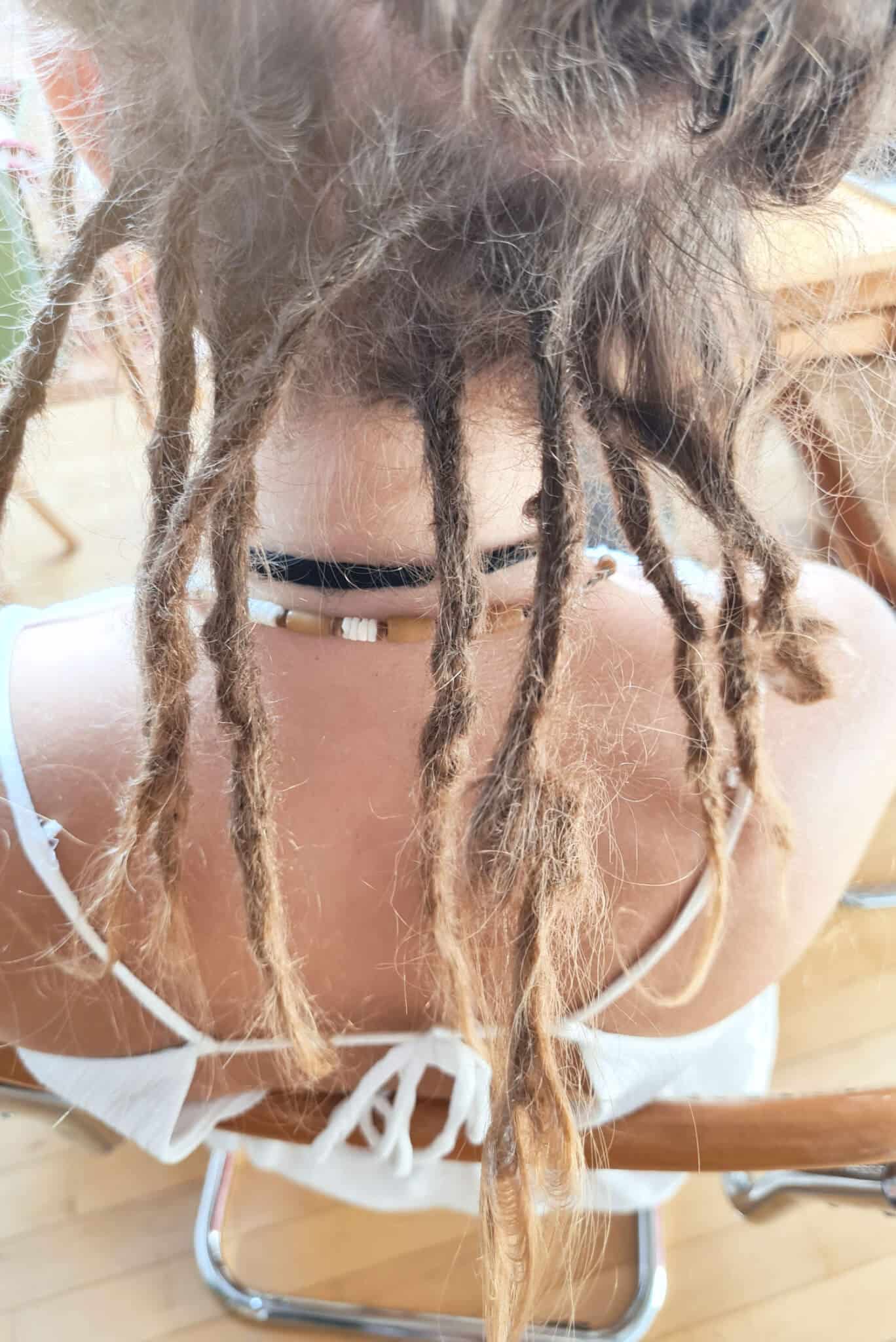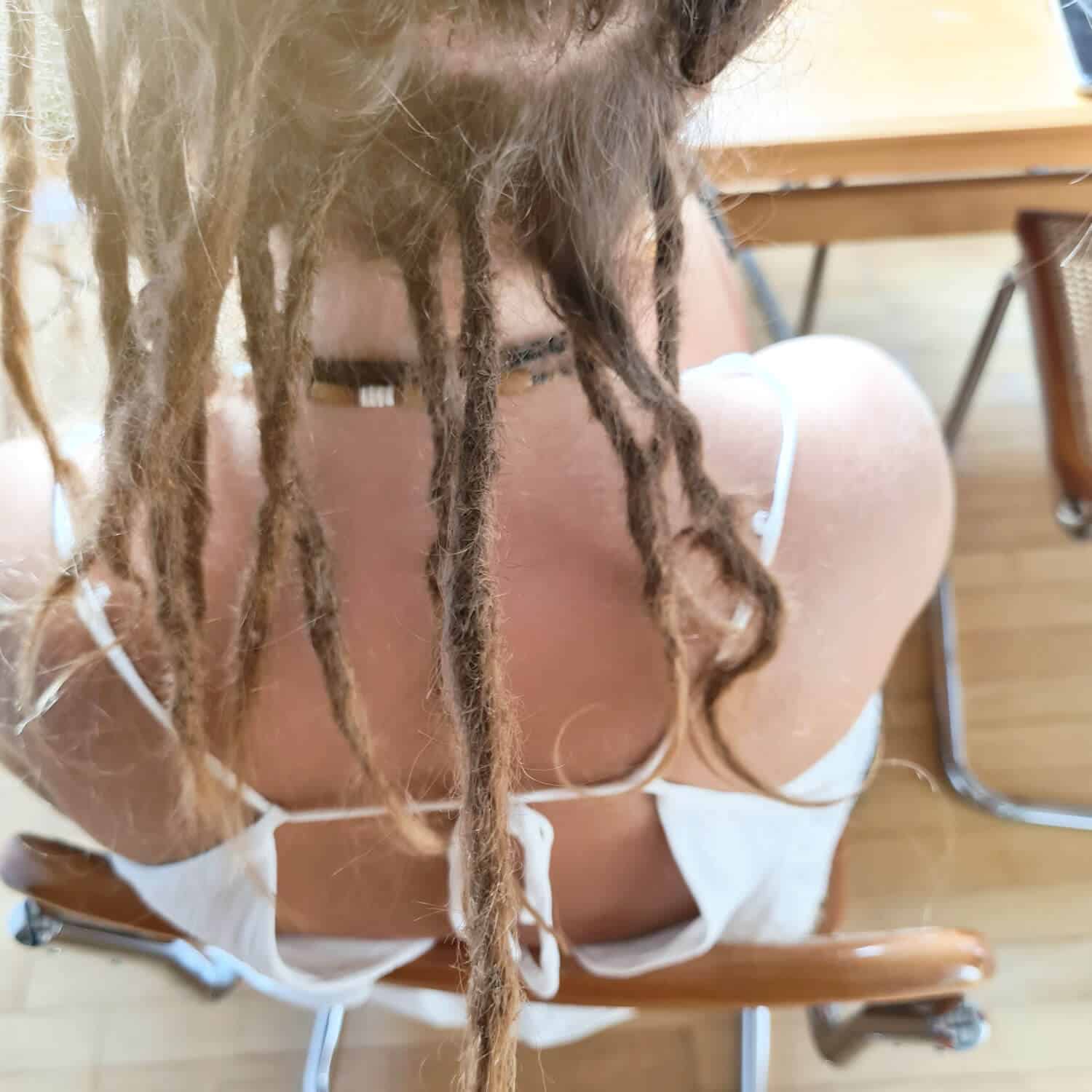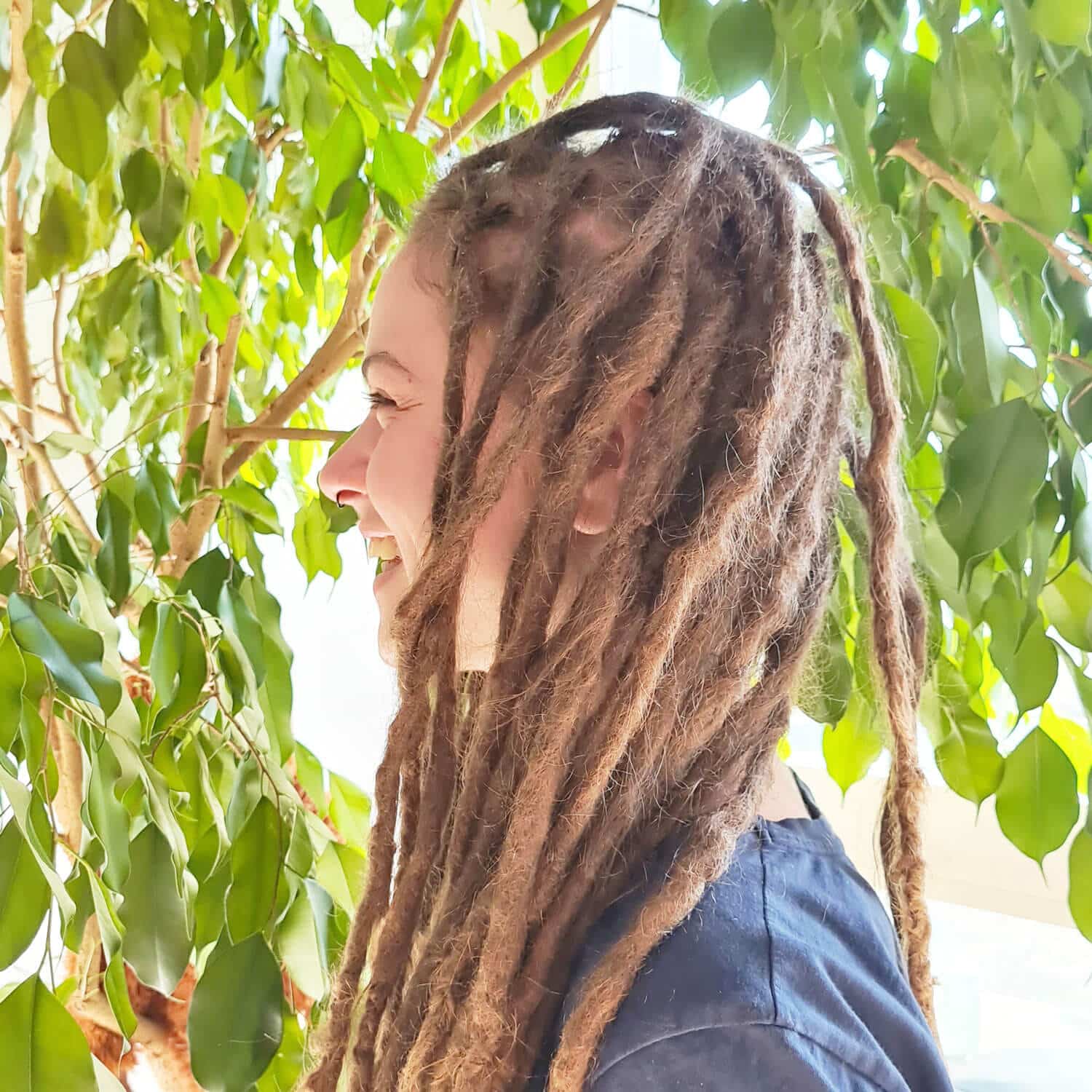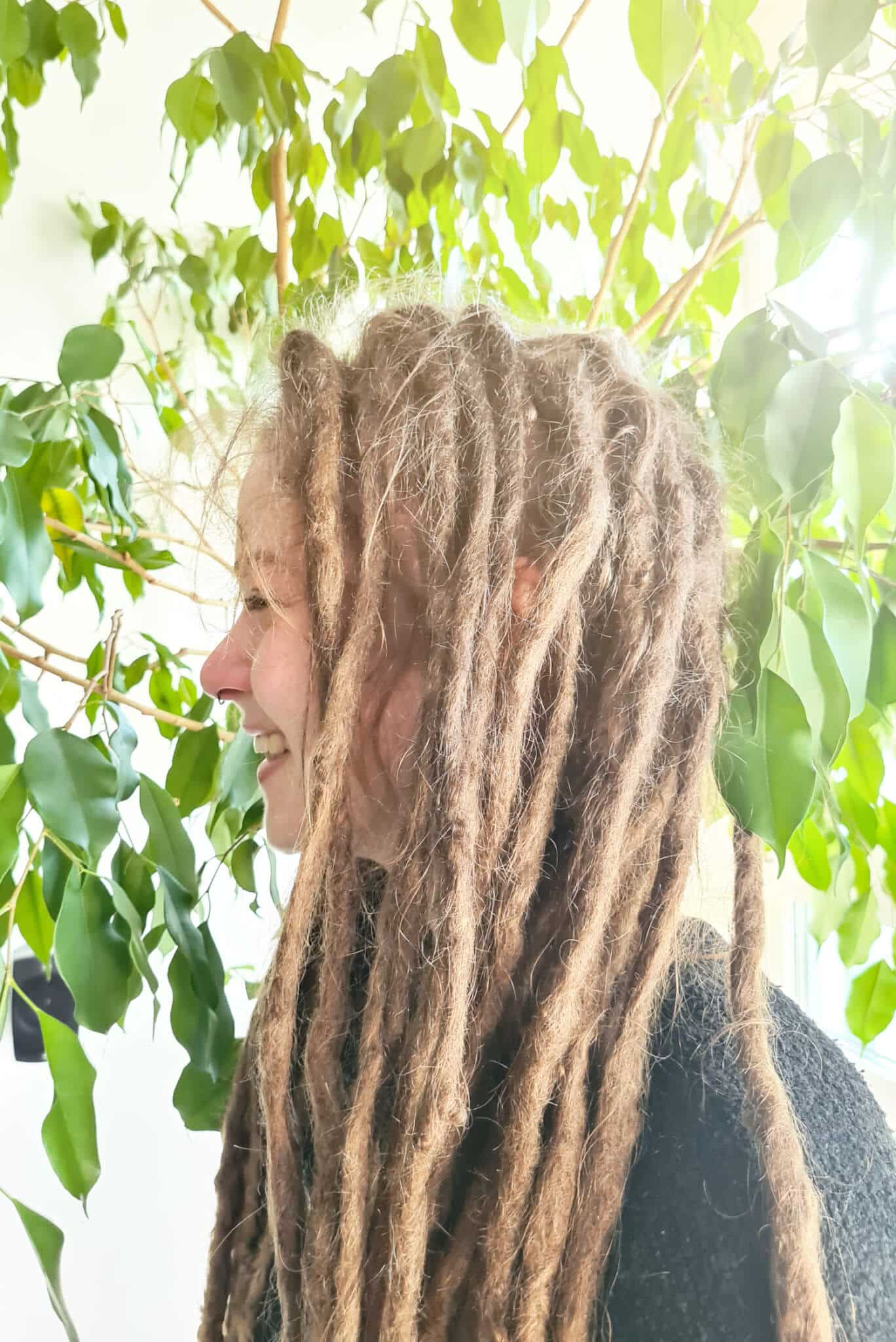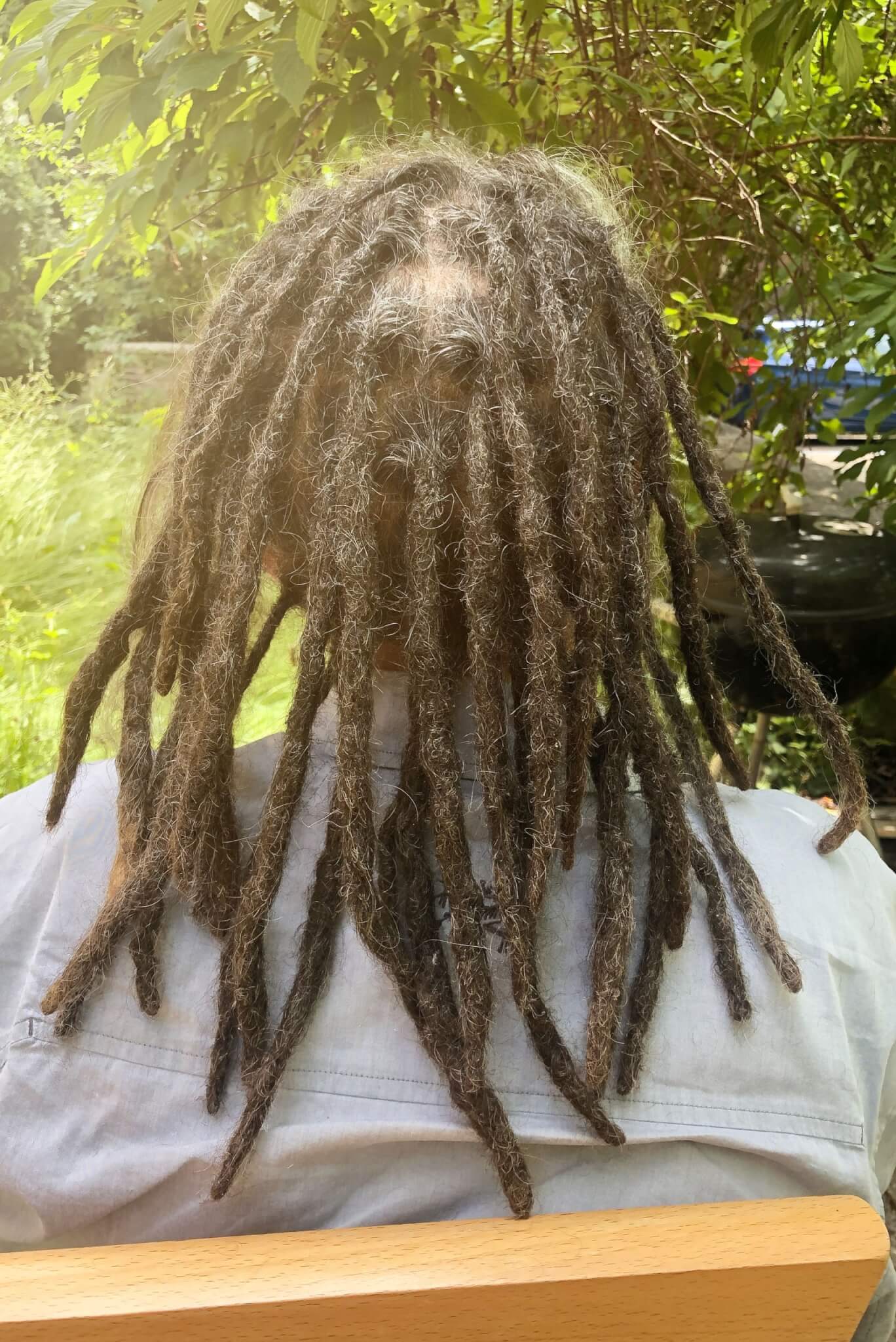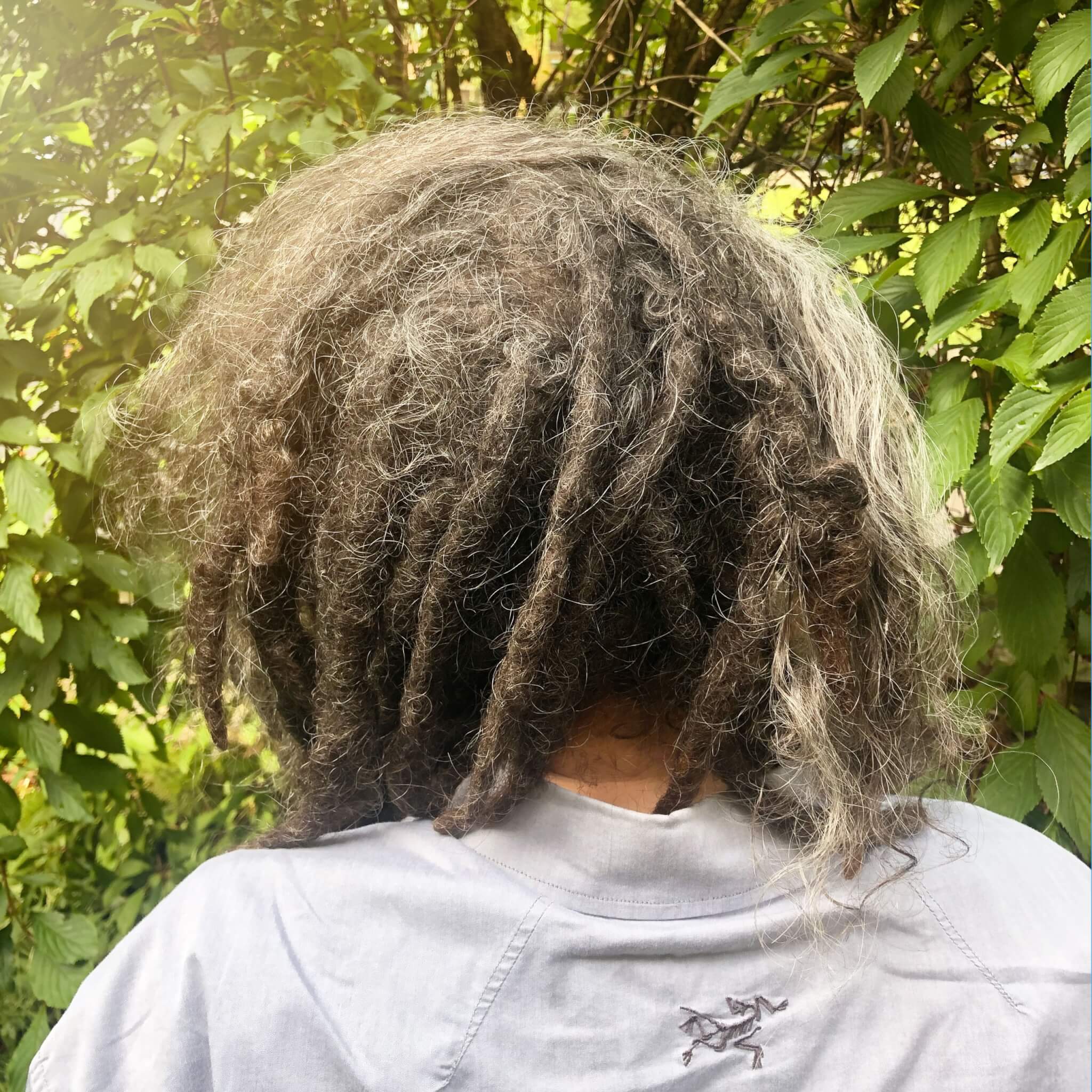Dreadlocks repairs and care
From simple dreadlocks repairs and normal maintenance like a little re-crocheting to elaborate restorations, we can help you and your dreads.



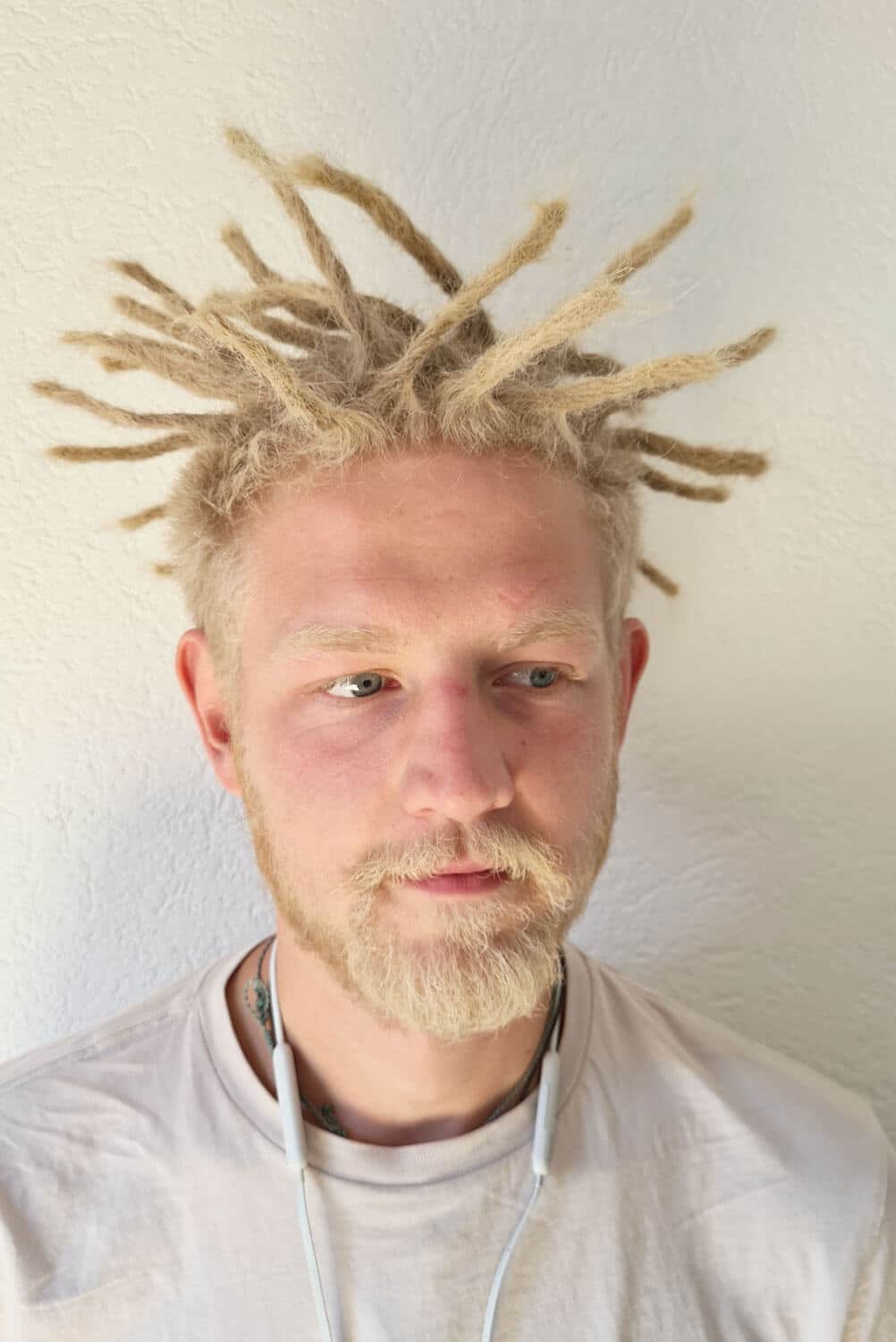
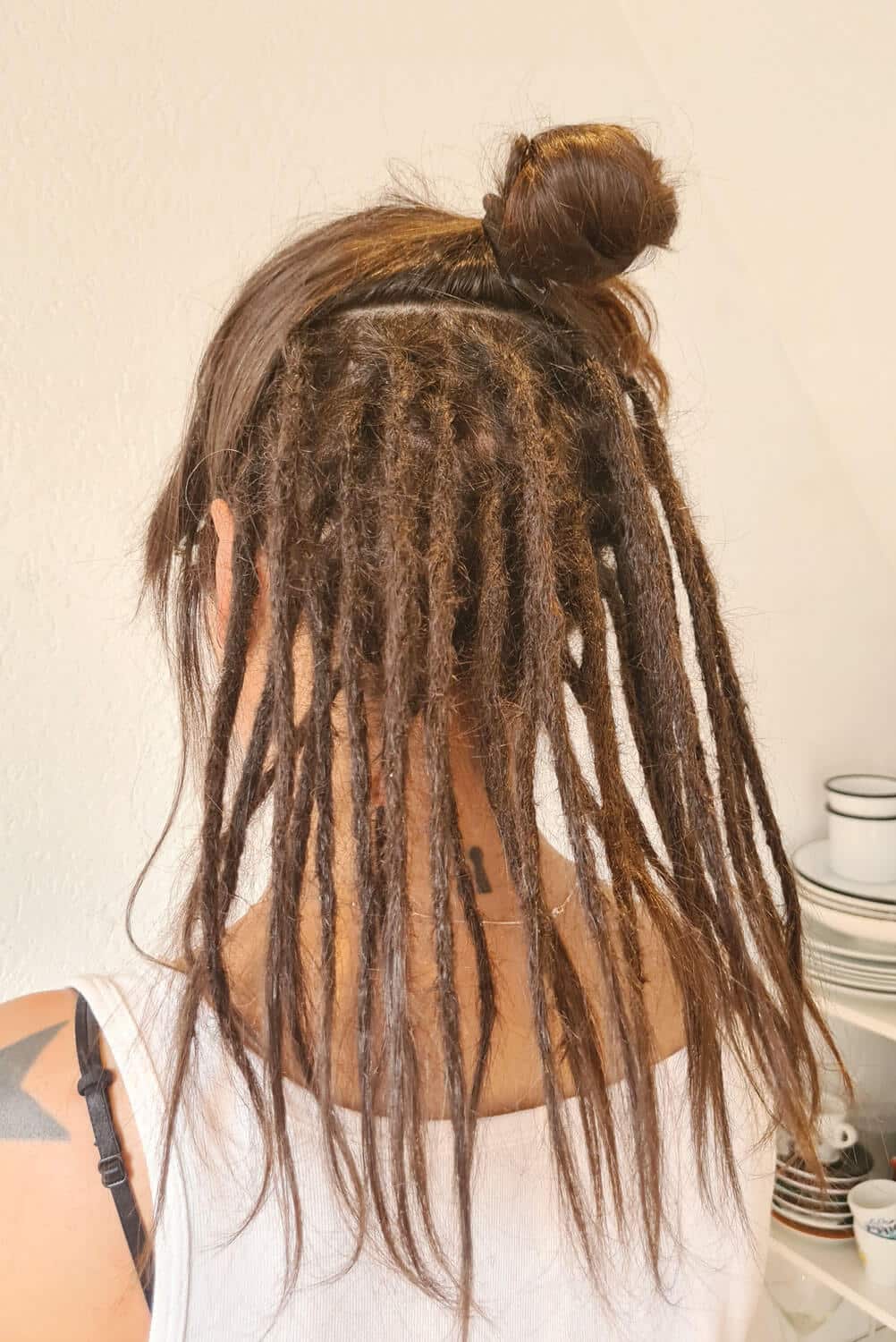
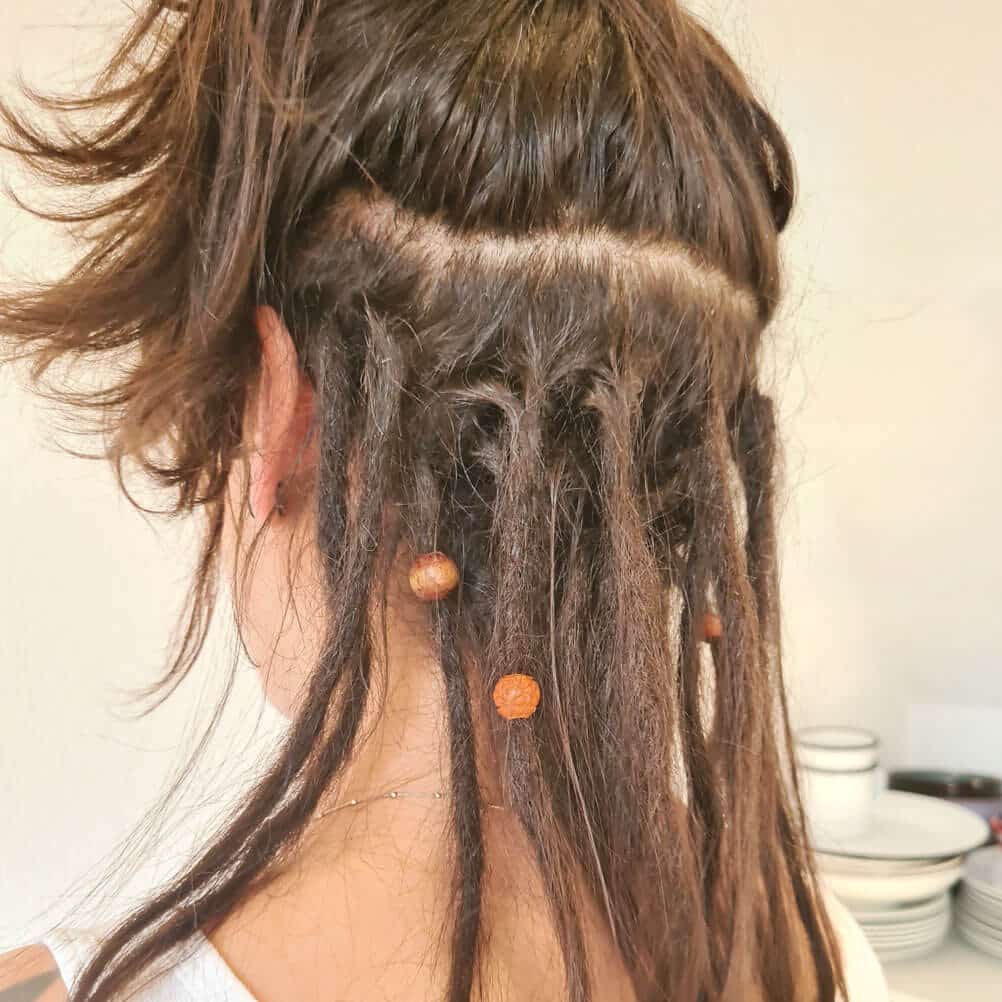
Can’t cope with the Högli? We help you.

Nimbly we crochet your loose hair into your dreads and make your roots nice and compact again. If you wish, we can also close the tips of your dreadlocks.
Maybe the birth of your dreadlocks didn’t go optimally because you went to a self-proclaimed professional or an afro store, for example. Don’t worry, we’ll turn any tousled bird’s nest into a worthy mane.
At a repair, we will give you advice to take home on how to improve your crochet technique so that you are able to re-crochet your own hair.
Nevertheless, we are happy about every loyal customer who comes back.
We can also help you with tips and tricks about dreadlocks and their care.
How often should I have my dreads re-crocheted?
If your rastas are a few years old, we recommend that you have the dreadlocks re-crocheted no more often than every 3 months. It is also enough to come by every 6 to 12 months.
Generally speaking, we can make a more lasting difference when a little time has passed.
Wio often is too often?
The Högli is a very efficient tool, but also a destructive one. You can also crochet too much. Therefore, we prefer to let a few months pass until we see each other again.
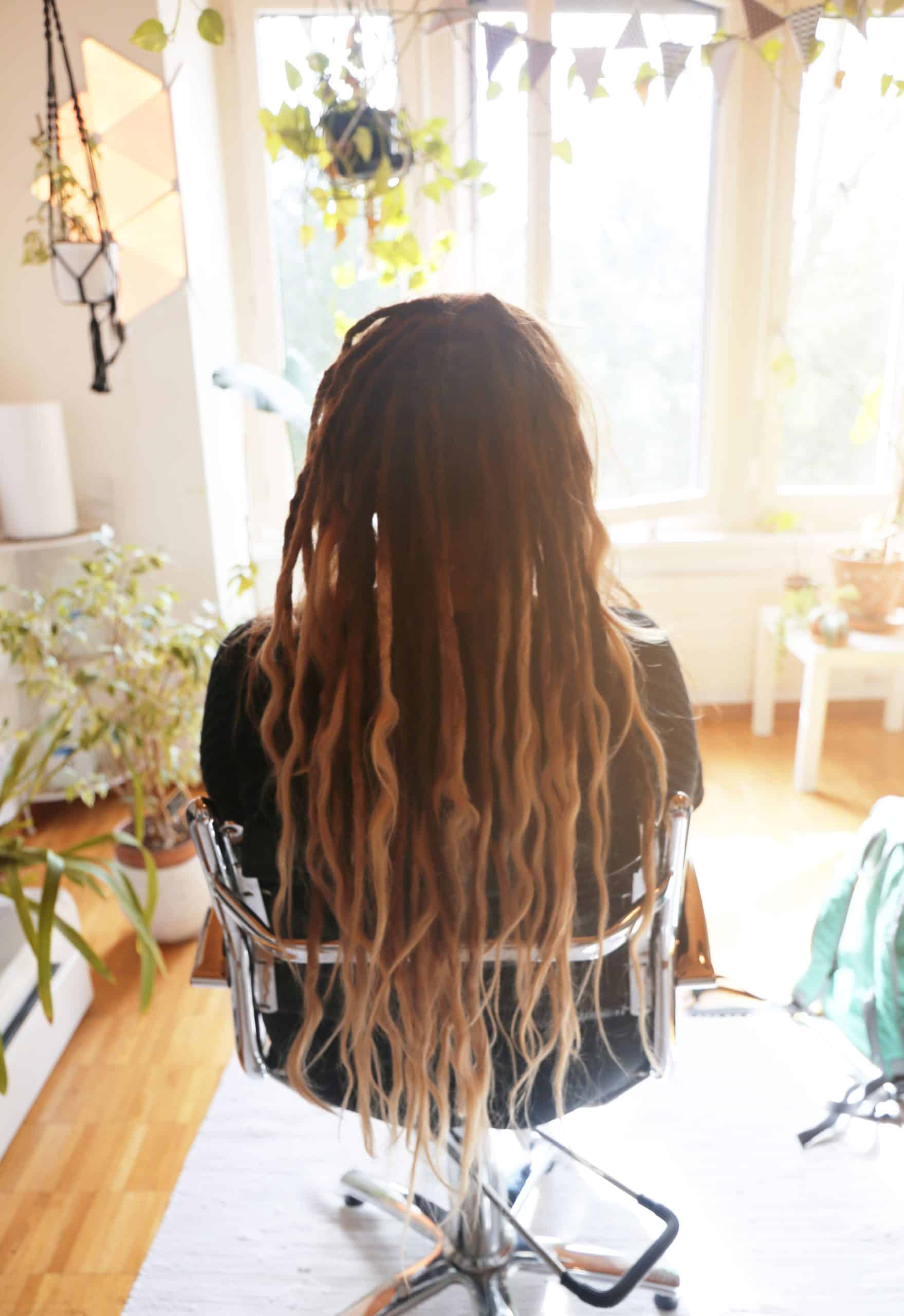
«The educational stitch»of new dreadlocks.
But there are exceptions, namely when your dreadies are still fresh. Baby dreads are what we call dreadlocks, which have been freshly made. These, having been in contact with water and wind, eventually reach puberty.
Puberty dreadlocks can become soft, start to fuzz and the tips, if closed, come undone.
Young dreadlocks
For young dreadlocks it is worth crocheting frequently. We call this the education stitch. This way you support the natural felting process and your dreadlocks get a nice, even shape.
If you’ve just had your dreadlocks done and you realize they could use a little maintenance, it’s worth stopping by (or crocheting them yourself).
The different levels of dreadlocks repairs
We divide the repairs and maintenance into different levels from 1 to 10, which helps us to better estimate the effort and also give feedback to the customers on how the dreadlocks are doing.
Be aware that this classification is not a judgment about you or your hair. It’s a handy tool for us to be able to estimate time and communicate with customers with a wink.
The decisive factors
- Hair type
- Lifestyle
- Frequency of washing
- Own efforts
- Time since last repair.
Level 1: Vanity Care
Of course, we are happy if customers want to come by every month. However, we do not want to serve clients more frequently than every 3 months (except for an educational stitch).
Why don’t we receive customers every month?
Sure, we could generate more sales if the regular customers were back in the chair with us every 4 weeks. But if only a month has passed, then almost no material has grown back. That means you have to crochet with a lot of force to work in the few loose hairs it has and re-crochet the beginnings. In addition, the dreadlocks care takes almost as long as if you only come every 3 or 6 months.
In short, it costs time, money, and it doesn’t actually do that much good.
Level 3: Standard care
If you come like this every 3 months, then we call it a standard dreadlocks care. The roots have already grown back a little, a few strands of hair have fallen out.
Regular customers who come by every 3-5 months fall into this category.
Level 5: Repair
With such repairs, quite a lot of attachment has already grown back. Partially, the dreadlocks are also already felted together at the base and should be separated with scissors. Likewise, it often has a lot of loose hair, which should be evenly distributed among the surrounding dreadlocks. The dreadlocks care effort here is already greater than normal.
Customers who come by every 6-12 months, into this category.
Level 7: Restoration / Renovation
Similar to level 5. Just felted approaches even tighter together. Sometimes the dreadlocks are also a bit soft and can be consolidated with the hook.
“Afro-shop” or “backcombing” victims often fall into this category.
Often these dreadlocks are not tightly crocheted, or the dreadlocks almost fall apart. Often, however, the division is well done. If again crochet well over it can still make great dreadlocks.
Lots of loose strands of hair, which can sometimes be made straight into new dreadlocks, are typical of a restoration.
Sometimes people also have too thin dreadlocks, which always break off. Sometimes it is worth merging them. The dreadlocks then have more material and grow longer.
Level 10: It’s best to redo the level.
There are cases where it makes sense to open the dreadlocks again and start over.
So for example, if the dreadlocks are not firmly matted and it has only very few dreads. For example, we had a request from a young man who had just 17 dreadlocks distributed over the entire head… And these were not even well done.
We then advised him to open these “dreadies” and start again with us. Simply because there was no point in continuing to crochet on such misshapen dreadlocks and with such poor division.
Why was the division bad? 17 dreadlocks are simply too few. That is, the base areas of the dreadlocks are very large. This leads to very thick dreadlocks, which are not ideal. Nothing against thick dreads, but it can be too thick.
Cost of repair
How long it takes to crochet the dreadlocks is always different and depends on the number and condition of the dreadlocks.
In summary: The first hour costs 100 francs, after that an hourly rate of 70 to 90 francs is charged, which you may set yourself.
Unfortunately, we can not conjure up hair.
Yes, it is unfortunate that some people (especially men), with time, do not have so much hair on the head. Occasionally, we can transplant fallen dreadlocks or tips of forked dreads at the back of the head to the top of the head. But this only works if there is still enough hair on top for a good base of the dreadlock.
Unfortunately, we can not conjure up hair on the scalp. Sometimes it’s better to go for the Catalan look (like Marc). That is, short in the front, long in the back. Then you have solved the problem and you no longer have to worry about the dreadies falling off.

Any questions? Write to us.
We are available to answer your needs and questions. Photos always help us a lot to give you accurate answers to your dreadlocks questions!

